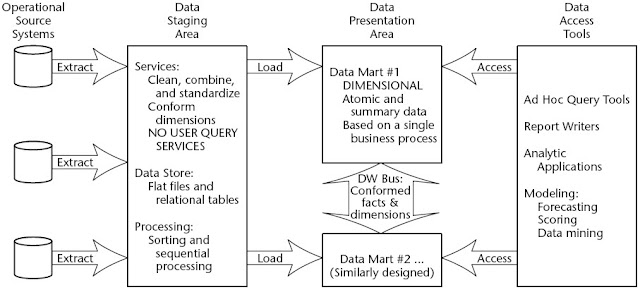A BI Application allows easy access to an organization's business data assuring data consistency and a powerful way of querying these data. It aims at helping management in decision making by offering a constant view on the status of their organization. More sophisticated BI Applications offer data mining, forecasting and modeling support.
The reasons for which a Reporting Application would not tackle this job, are:
- multiple data sources
- very large quantity of data
- requirement to query also historical data.
A BI Application extracts data from Operational Source Systems (meaning the applications that capture the transactions of a business - an ERP for example), stores the data in a Staging Area where it is transformed (i.e cleaned, combined and standardized) and than loads the data from the Staging Area into the Presentation Area where it is stored in Data Marts or Cubes. This process is named ETL, acronym standing for extract - transformation - load. An Access Tool offers query support on the Data Marts or Cubes.
Basic elements of a data warehouse (The Data Warehouse Toolkit by Ralph Kimball and Margy Ross)
For details on Dimensional Modeling explaining how Data Presentation Area is built, read: BI Dimensional Modeling - Data Marts, BI Dimensional Modeling -Design Techniques





No comments:
Post a Comment